Excavators can be transported on flat bed trailers or in the back of a tipper truck, depending on the size off the excavator.
- Large excavators: must be transported on a semitrailer flat deck
- Small and medium excavators: can be transported in the back of a tipper truck, if there are suitable tie down points and the excavator fits in the truck so that the rear gate can be secured
- Small excavators: can be transported on a light truck or flat deck trailer.
Check the rated capacity of the trailer or truck is more than the weight of the excavator and any other load you’re carrying (e.g. additional attachments).
Loading the excavator
Best practice is to use ramps to drive the excavator on and off. Some operators will load an excavator onto a truck without ramps, but it is dangerous and hard on the equipment.
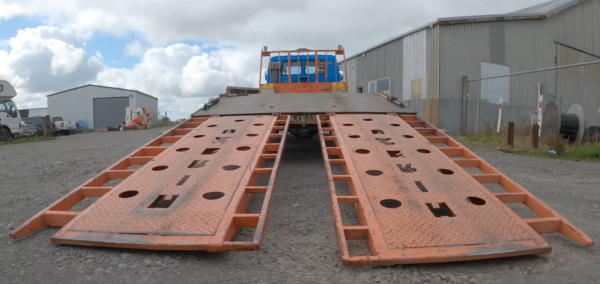
Loading an excavator is actually one of the more dangerous tasks, particularly if it’s a large excavator and you are loading in wet weather. This is because the main risk is the excavator slipping off the side of the trailer and rolling over. This can happen if:
- The operator doesn’t line the excavator up with the deck properly
- The deck is on a slope, and wet weather or mud means the excavator slides off (you can see an example of this in our excavator training course.)
Truck and trailer placement
The most critical thing is that the truck or trailer are not tilted to the side. They should be flat and level to within a couple of degrees. There’s more tolerance for the truck or trailer to be tilted forwards or backwards, but it’s recommended to get it as flat as possible within reason. Leave enough room for the ramps and for the excavator to be able to line up to drive straight up the ramps.
If you’re loading to a truck with air brakes, when the truck is parked, it should be impossible to move the truck. If you’re loading to a smaller truck with a cardan shaft brake, or to an unbraked trailer, it’s important that you chock the wheels and leave the truck in gear to ensure that the truck and trailer don’t move while you’re loading or unloading.
Spotter
Often you will have a truck driver and an excavator operator. The driver should act as a spotter, assisting the operator to position to excavator on the vehicle. Use agreed-upon hand signals. If the driver is the operator, care needs to be taken because of blind spots; the operator can always get out of the cab to check the position.
Setting the ramps
Don’t stand in the way of ramps, even if you think they are secured; people have been killed or seriously injured when ramps have fallen on them.
Prepare the ramps and the trailer. If your trailer has air bags, lowering the bags can make it easier to load the excavator. Loose ramps should be secured to the trailer. In some cases, the whole trailer will tip to form the ramp.
Approaching the trailer
Lift the boom so that bucket is far enough off the ground to clear the ramps and deck. Approach the ramps straight on. Drive forwards slowly onto the trailer. Ensure that when you start up the ramps the vehicle isn’t moving. If you can see out the windows, check the alignment as you drive up.
At some point, you’ll tip forward when you reach the breakover point. At this point, if you don’t have a spotter, it’s a good idea to get out and check your alignment (or, at minimum), open the cab door and lean out so you can see). Lower the bucket so it’s just above the deck. As the machine tips, the bucket should cushion the movement; the last thing you want is it bouncing and rocking and causing the excavator to move its position on the vehicle.
An ideal position to the leave the excavator is up against a gooseneck or step deck as this will stop it sliding forwards, but that’s not always possible. You need to decide whether you transport the excavator facing forwards or rearwards; this depends on your desired weight distribution. If you’re transporting it rearwards, slew the excavator around so that the boom faces the back of the vehicle.
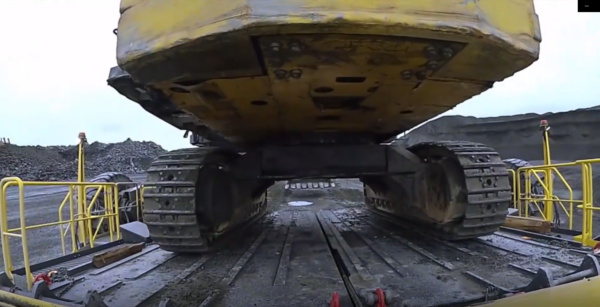
Once you’re in the right position, lower the attachment to the deck. Then you will get out and chain the excavator to the vehicle.
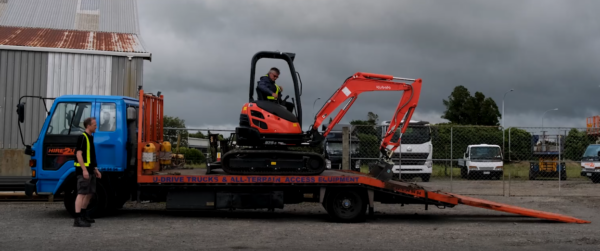
Restraining the excavator on the vehicle
Transporting vehicle will have chain hooks or a rope rail for you to attach the hooks to. Chains are essential for medium and large excavators, whereas smaller excavators can be secured using plenty of strops. Remember that the total rating of the restraints must be equal or greater than the weight of the excavator if it is blocked against a gooseneck or step deck, or double if it is not blocked. If you need to refresh your load restraint knowledge, check out this heavy vehicle load restraint course.
Each machine will have tie-down points for you to attached the restraints. Don’t chain over the tracks. Be careful not to pinch any hoses.
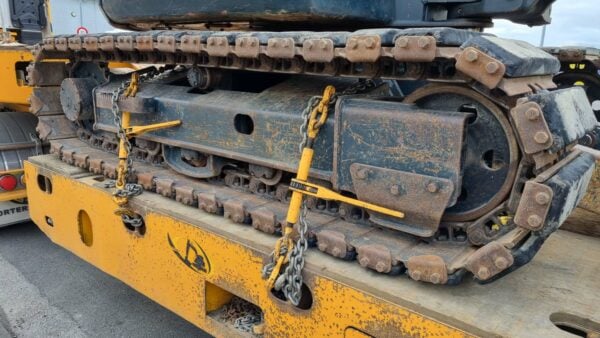
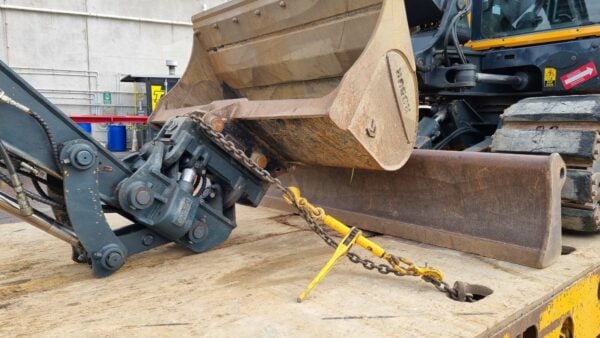
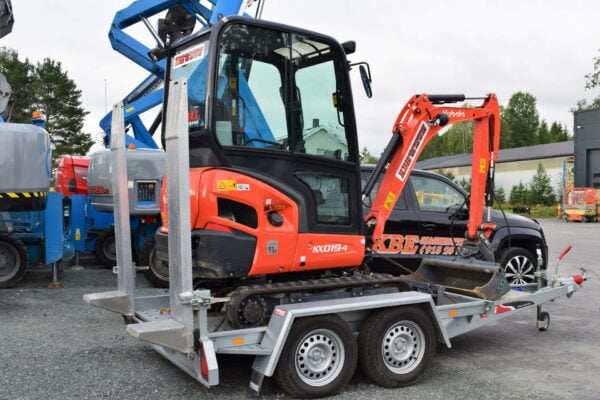
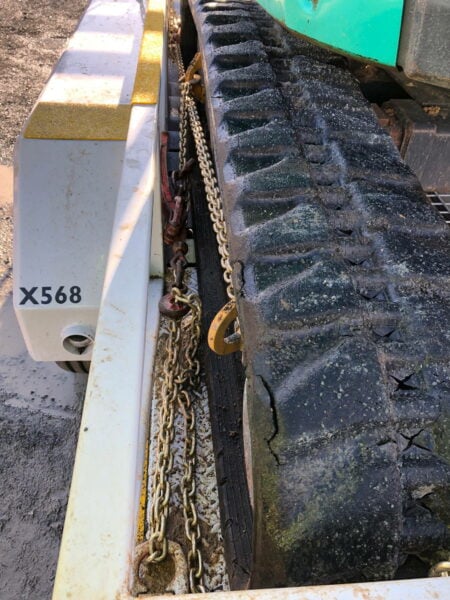
Unloading the excavator
Complete the above steps in reverse, however, remember that the steering on the excavator will be in reverse as you back it off.

